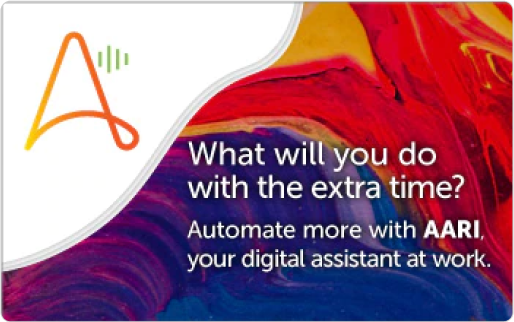Blog
Driving Business Continuity – It’s a Hero’s Job

As an IT leader, you have multiple — often conflicting — mandates. Of the two major mandates, the first is cost cutting. Your IT budget, never all that generous, is now being especially squeezed due to the economic fallout from COVID-19. In January 2020, the view of IT spending by businesses was rosy, with expectations that it would increase by 4.7% over the previous year. But IT spending is now predicted to decline by 2.7% — a drop of almost 8%, says IDC. Somehow, you’re going to have to cope.
Under the best of circumstances, the cost-cutting part of the job is no fun. But your second major mandate makes up for it in excitement — perhaps even too much so.
You actually hold the heart of the business in your hand. Not only do you have to “keep the lights on,” but you play a key role in keeping your organization agile and competitive in a rapidly changing digital market environment. There’s the drive toward digital transformation, in which you are a critical player.
As part of this second mandate, in the times of crises, you are the point person for all-important business continuity. And it’s not just regular business continuity — for example, as if your data center flooded, or if there were an earthquake in one region that you operated. That would be difficult enough. No, this is a major business continuity endeavor because you have to do it in the middle of a major business transformation, where you suddenly have to cope with a whole new way of doing work. Your employees are remote and working from home. Your customers can only interact with you digitally. Supply and distribution chains have been globally impacted.
Pivoting amid a business continuity crisis? And, somehow, it’s working? That makes you and your staff the real heroes of the times.
IT leaders’ vehicle: intelligent automation
As a hero, you’re entitled to your vehicle of choice to get things moving. And, increasingly, IT leaders and their teams are choosing intelligent automation to help them during these challenging times.
Intelligent automation is the combination of Robotic Process Automation (RPA) with artificial intelligence (AI) technologies, allowing rapid automation with human-like intelligence. It helps you manage costs and makes you more agile, competitive, and capable of responding swiftly to each day’s new challenge.
RPA is the foundational technology for automating manual, repetitive business processes — the kind your employees don’t like. Not only does it speed up such things as order to cash or supply-chain management, but it also squeezes inefficiencies out of many business processes, freeing your workers up for more value-added work. So this helps with the cost-cutting part of your job.
But the partnership with AI is where intelligent automation really shows its benefits. AI can learn from and improve on processes, spotlight inefficiencies, and absorb unstructured information, including email, voice, and video. Together, RPA and AI can automate complex business processes such as IT ticket management and asset tracking and management. For example, with the recent pandemic and the sudden surge in requests for rescheduling, intelligent automation assisted an airline help desk deal with the influx of ticket refund requests. The airline's agents were able to quickly pull ticket information from customer files, access booking software applications, and create e-vouchers in approximately three minutes. As a result, using an Automation Anywhere AI-enabled bot, thousands of airline refunds were processed daily, which otherwise could’ve taken days if not weeks.
How intelligent automation helps address IT priorities
IT leader priorities have changed since the pandemic hit. During the biggest business continuity challenge of their lifetimes, IT professionals have focused in on certain issues. A recently commissioned survey by a third party showed us what is most important today.
Data management (72%) — When the mandate to work from home hit, office workers everywhere picked up their laptops and left the premises. They plugged into the internet remotely and expected to seamlessly connect to the data and systems they needed to do their jobs. At some organizations, this worked flawlessly. At others, not so well. IT leaders are particularly concerned with data — finding it, ascertaining its quality, and getting it into the right systems in the right format. Data today is your organization’s most prized asset, after all — but it’s more so today, during the crisis.
Now, with distributed streams of data going back and forth over the network, you need to be especially clear about where it is coming from, where it is going, and that it is in good enough shape to derive insight from it. Intelligent automation can do all of these things effortlessly, which previously required manual, hands-on work by human workers.
Cybersecurity (63%) — Similarly, when your workforce scattered, it created anywhere from dozens to thousands of new points of vulnerability for the network. Intelligent automation can do everything from diagnostics of potentially infected or breached systems to event and threat logging and alerting, to fault remediation.
Asset traffic and management (57%) — Likewise, you need to manage and control your IT assets all the more carefully now that they are so widely distributed. The last thing you need is to lose track of company property such as laptops, creating auditing issues down the road. Intelligent automation can automatically manage inventory, licenses, real-time device management, and more — all in real time.
IT help desk (52%) — The chances are that your help desk has been overwhelmed since the directive to work remotely. Employees need help with setting up their home working environments and run into problems with connectivity, videoconferencing, and access to data and systems. Intelligent automation can take the bulk of help desk calls off your IT team’s shoulders by automating ticket creation and remediation, doing service level agreement (SLA) monitoring, and more.
Compliance and reporting (43%) — When your workforce is out of sight, and data is flowing across employee’s personal devices, you could end up with a compliance nightmare. Intelligent automation can help here, too, by aggregating data from multiple sources, performing risk assessments, generating compliance logs, and ensuring adherence to SOX, GDPR, CCPA, FISMA, HIPAA, and many other regulations.
Infrastructure management and operations (43%) — And, this is one of the things at which intelligent automation truly excels. So much of IT infrastructure management and operations is low-hanging fruit for automation. And it eats up so much of your IT team’s time. Imagine automating tasks such as operational monitoring, application and system installation, testing, and verification, system testing, staging, and bug tracking, as well as vendor master file updating.
Not the same old IT department
IT teams across the globe were faced with unprecedented challenges. You must keep your business operating as usual — as much as that is possible — and ensure business continuity while continuing to support digital transformation.
Luckily, you have tools like intelligent automation to support you and your team. With intelligent automation, the burden of the dual role that you have to take on is considerably lightened. And you can achieve success at both, cutting costs while advancing your organization’s digital agility.
Drive Business Continuity.
Share this:
Related Blogs
About Avi Bhagtani
Avi Bhagtani is senior director of product marketing, focused on artificial intelligence and cognitive automation. He has multiple years of industry experience managing global software product portfolios in software, the Internet of Things, AI, and cloud organizations.
Subscribe via EmailView All Posts LinkedIn






